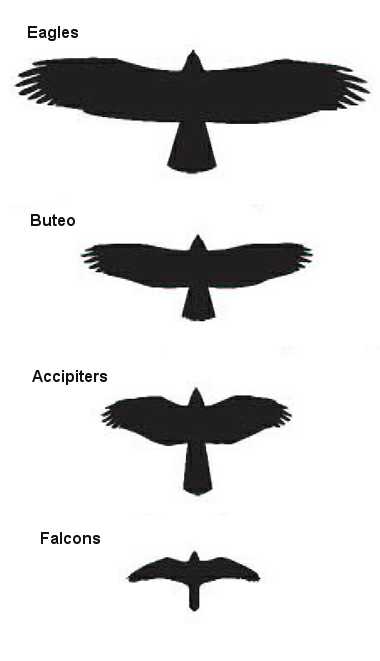Identifying Raptors in Flight
Although it takes time to be able to identify specific raptor species, you can tell which general
group a bird belongs to by its size, silhouette in flight, and how it flies. The following groups are
listed from largest to smallest.
Eagles are very large raptors with proportionally long, broad wings, a fan shaped tail that is twice
as long as the head and neck. Eagles will soar on outstretched wings with few wing beats. They
feed on small to medium sized mammals.
Buteos have broad, rounded wings, a robust body
and a fan shaped tail. Buteos are medium to large soaring hawks. They may fly for long periods
without flapping, riding on warm air currents. They feed on rodents, reptiles, and insects.
Accipiters are forest hawks that have short, rounded wings, and a long tail. These small to
medium sized birds make rapid wing beats and then glide. They prey mainly on birds and small
mammals.
Falcons have long, narrow, pointed wings, large heads, and long tails. They are small to medium
size and have rapid wing beats in flight. They are famous for their technique of high speed dives
toward their prey.
